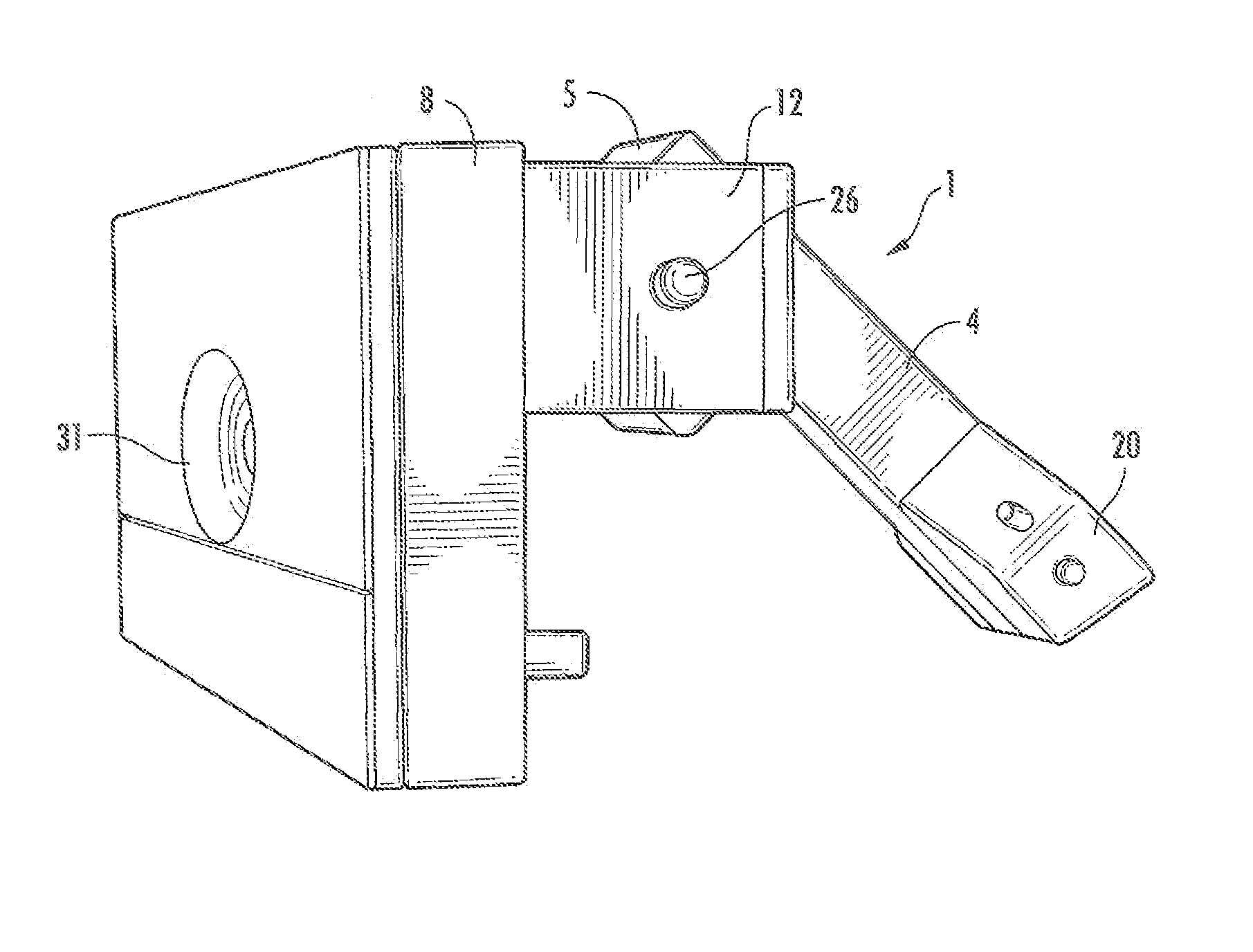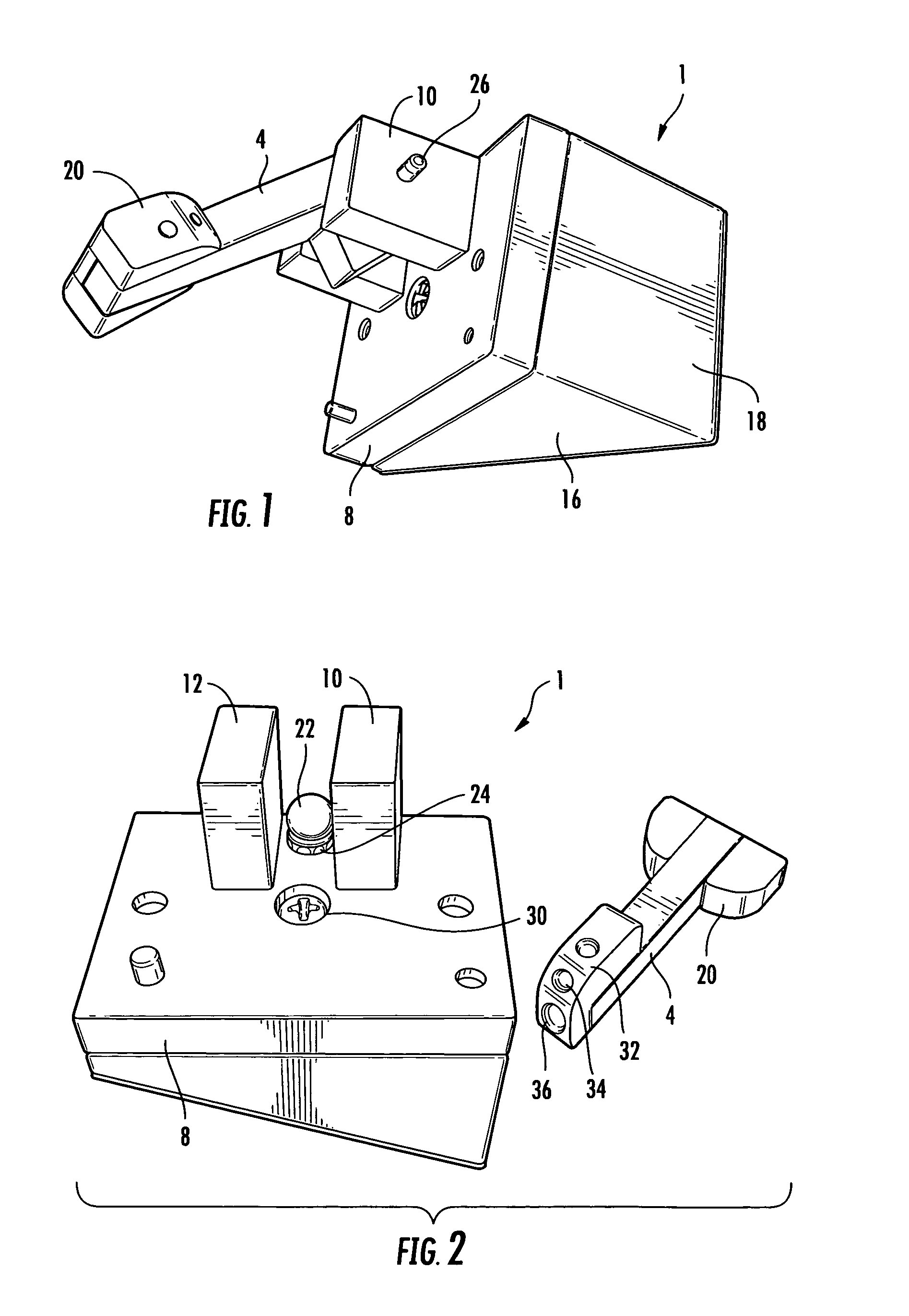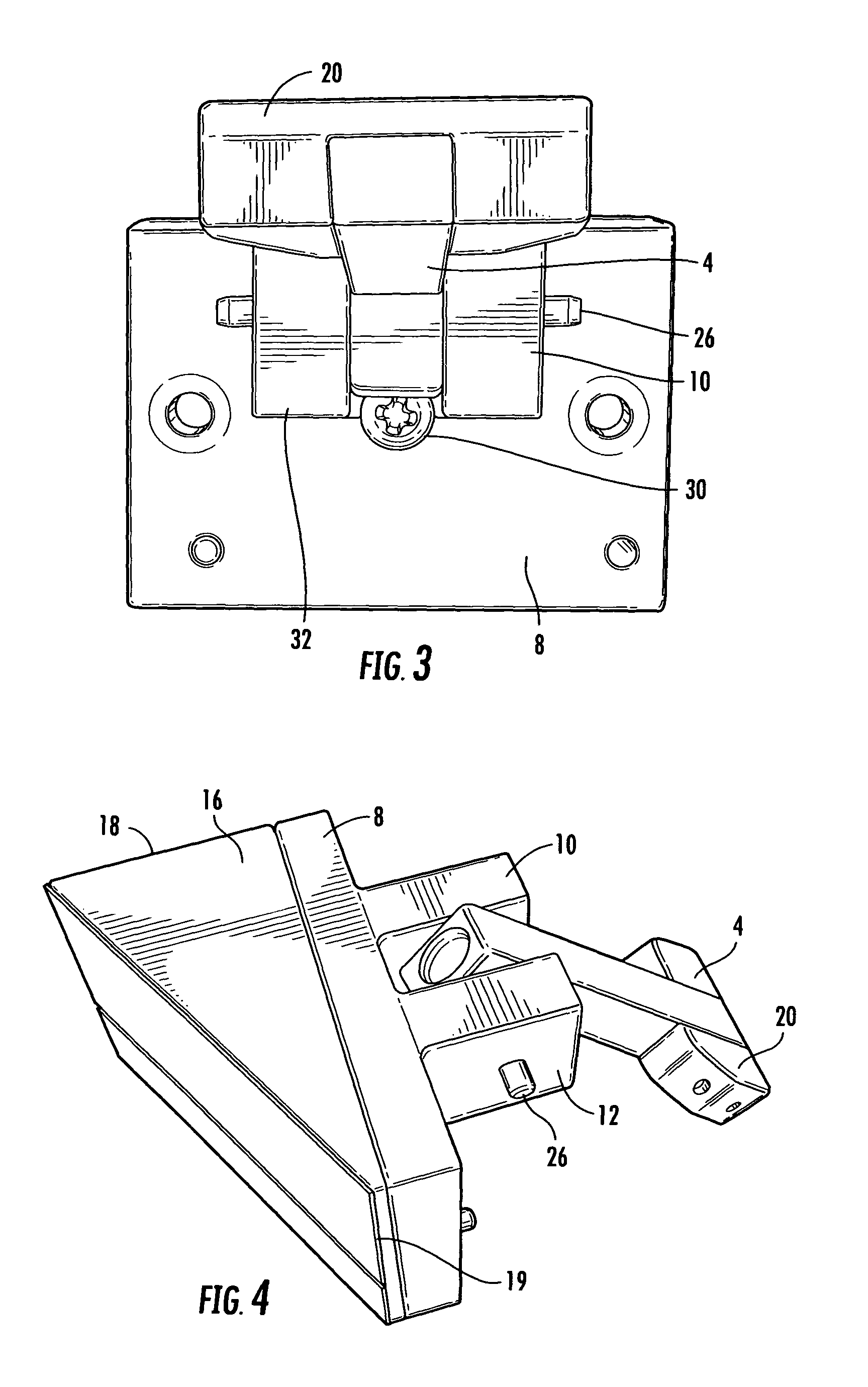Door mounted finger safety device
a finger safety and door technology, applied in the field of door hardware, can solve problems such as commanding a less robust arm structure, and achieve the effect of protecting against injury
- Summary
- Abstract
- Description
- Claims
- Application Information
AI Technical Summary
Benefits of technology
Problems solved by technology
Method used
Image
Examples
Embodiment Construction
[0042]Looking more closely at the inventive door check device 1 depicted in FIGS. 1-12, it will be seen that the principal operative element is the outwardly projecting, articulated impact or action arm 4. This action arm 4 and its associated components may be fabricated from any of a variety of source materials. These materials include but are not limited to plastic, wood, metal, and the like, bearing in mind that to be qualified a source material must be sufficiently substantial to withstand repeated compressive and shearing impacts. Since this inventive device 1 is intended for widespread use, it also is important that the selected source materials be relatively inexpensive and easily manufactured and assembled.
[0043]The door check device 1 with impact or action arm 4 as viewed in FIGS. 1 and 2 extends from a proximal end at a base 8 to which it is mounted on pivot pin 26 in journal bearing block elements 10 and 12 (integral with, or affixed to, the base 8). The action arm extend...
PUM
 Login to View More
Login to View More Abstract
Description
Claims
Application Information
 Login to View More
Login to View More - R&D
- Intellectual Property
- Life Sciences
- Materials
- Tech Scout
- Unparalleled Data Quality
- Higher Quality Content
- 60% Fewer Hallucinations
Browse by: Latest US Patents, China's latest patents, Technical Efficacy Thesaurus, Application Domain, Technology Topic, Popular Technical Reports.
© 2025 PatSnap. All rights reserved.Legal|Privacy policy|Modern Slavery Act Transparency Statement|Sitemap|About US| Contact US: help@patsnap.com



